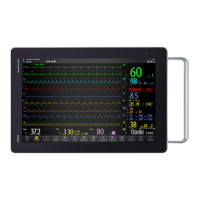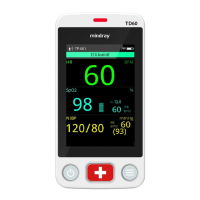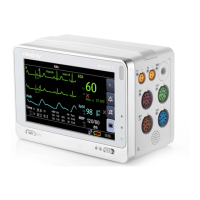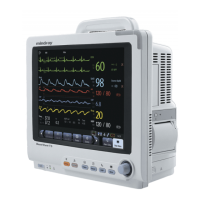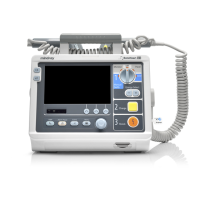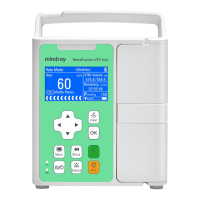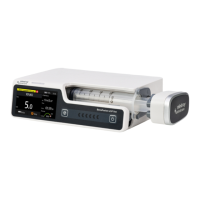BeneVision N1 Patient Monitor Operator’s Manual 7 - 13
■ If both the V-Brady PVCs and V-Brady Rate are lower than the limits, but V-Brady PVCs is greater than 2, a
Run PVCs alarm is generated.
■ If the V-Brady PVCs and V-Brady Rate are greater than or equal to limits, but the Vent rate is is lower than V-
Tach Rate (130), a Vent Rhythm alarm is generated.
7.6.5 Intelligent Arrhythmia Alarm
Normally, an arrhythmia alarm is presented when an alarm condition is detected. However, there are certain
situations that can inhibit audible and visible alarm indications even though an alarm condition was detected.
For more information, see 7.6.5.1Arrhythmia Alarm Chains and 7.6.5.2Arrhythmia Alarm Timeout Rules.
7.6.5.1 Arrhythmia Alarm Chains
If multiple alarms overlap, announcing all of the detected alarm conditions would be confusing, and a more
serious condition might be overlooked. So arrhythmia alarms are prioritized by alarm "chains".
7.6.5.2 Arrhythmia Alarm Timeout Rules
The following table explains how audible and visual alarms are indicated during arrhythmia alarm timeout.
Asystole
VͲFib/VͲTach
VͲTach / Vent Brady
Extreme Tachy/
Extreme Brady
Pause
Nonsus VͲTach /
Vent Rhythm
Tachy/Brady
Run PVCs
Couplet
R on T
Bigeminy
Trigeminy
Multiform PVC
PVC
Pacer not Capture /
Pacer not Pacing /
Missed Beat
HR High /
HR Low
Pauses/min
AͲFib/
AͲFib End
Irr. Rhythm/
Irr.Rhythm End
PVCs/min
PVC Alarm Chain
Beat Detection
Alarm Chain
Rate Alarm Chain AͲFib Alarm Chain
High Priority Medium Priority
Previous alarm Current alarm Alarm indication
Alarm in high priority
chain
Alarm in high priority chain Alarm light and alarm tone
Alarm in medium priority chain During timeout period, alarm light and alarm tone
are disabled. When the timeout period is reached,
alarm light and alarm tone are reactivated.

